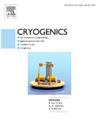低温流体的稳定沸腾和瞬态淬火:使先进推进剂储罐设计和操作计划成为可能的新实验
IF 2.1
3区 工程技术
Q3 PHYSICS, APPLIED
引用次数: 0
摘要
低温流体的管理和储存是未来太空任务的关键。工程师需要精确的工具来为低温流体管理(CFM)设计高效的流程和轻量级组件,以帮助实现下一代太空探索任务。CFM的一个常见和关键的元素是需要冷却一个温暖的容器,用液冷剂填充它,并在较长时间内保持液冷剂,直到它被使用或转移。控制该过程设计要求的主要过程是短暂的,通常使用集总节点计算模型进行模拟。池沸腾是一个关键现象,必须以一种准确且与这些集总节点热设计工具兼容的方式进行建模。Creare和凯斯西储大学(CWRU)正在开发池沸腾的数据和相关性,这将支持高效推进剂管理系统的设计。这些数据和方法改进了现有技术,因为:(1)它们完全基于低温沸腾的测量,(2)它们完全考虑了稳定沸腾和淬火之间的物理差异,(3)它们的准确性等于或优于所有流体和沸腾状态的最先进的相关性。Creare负责测试设施的设计和操作,而CWRU负责评估现有文献并开发改进的相关性。我们设计并建造了一个实验装置,用于收集使用关键低温推进剂在稳定沸腾和瞬态淬火条件下的传热数据。我们使用该设备测量了液氮、液态氩和液态甲烷在稳定和瞬态配置下的压力和方向范围内的沸腾曲线,共收集了445个新的稳态数据点和5180个新的瞬态淬火数据点。选择检验矩阵来填补现有文献数据的空白。我们还使用由更薄的壁构成的第二个测试件来测量沸腾曲线,以显示壁厚对传热性能和沸腾状态转变的影响。我们分析数据的趋势,以确定必须考虑稳态和瞬态沸腾模式之间差异的条件。这项工作能够制定新的池沸腾/淬火传热相关性,以支持CFM系统和程序的设计。本文章由计算机程序翻译,如有差异,请以英文原文为准。
Steady boiling and transient quenching of cryogenic fluids: new experiments to enable advanced propellant tank design and operations planning
Cryogenic fluid management and storage are key to future space missions. Engineers need accurate tools to design efficient processes and lightweight components for cryogenic fluid management (CFM) to help enable the next generation of space exploration missions. A common and critical element of CFM is the need to chill down a warm tank, fill it with liquid cryogen, and maintain liquid cryogen over extended periods until it is used or transferred. The major processes that govern the design requirements for this process are transient and often simulated using lumped-node calculation models. Pool boiling is a key phenomenon that must be modeled in a way that is accurate and compatible with these lumped-node thermal design tools. Creare and Case Western Reserve University (CWRU) are developing data and correlations for pool boiling that will support the design of efficient propellant management systems. These data and methods improve on existing technology because: (1) they are based solely on measurements of cryogenic boiling, (2) they fully account for physical differences between steady boiling and quenching, and (3) their accuracy is equal to or better than state of the art correlations across all fluids and boiling regimes. Creare is responsible for design and operation of the test facility, while CWRU is responsible for assessment of the existing literature and development of the improved correlations.
We have designed and built an experimental facility designed for gathering heat transfer data under both steady boiling and transient quenching conditions using key cryogenic propellants. We have used this facility to measure boiling curves for liquid nitrogen, liquid argon, and liquid methane over a range of pressures and orientations in both steady and transient configurations, gathering a total of 445 new steady-state data points and 5,180 new transient-quenching data points. The test matrix was selected to fill gaps in the existing literature data. We also measured boiling curves using a second test article constructed from a much thinner wall to show the impact of wall thickness on heat transfer performance and boiling regime transitions. We analyze trends in data to identify conditions when the differences between steady and transient boiling modes must be considered. This work enables formulation of new pool boiling / quenching heat transfer correlations to support design of CFM systems and procedures.
求助全文
通过发布文献求助,成功后即可免费获取论文全文。
去求助
来源期刊

Cryogenics
物理-热力学
CiteScore
3.80
自引率
9.50%
发文量
0
审稿时长
2.1 months
期刊介绍:
Cryogenics is the world''s leading journal focusing on all aspects of cryoengineering and cryogenics. Papers published in Cryogenics cover a wide variety of subjects in low temperature engineering and research. Among the areas covered are:
- Applications of superconductivity: magnets, electronics, devices
- Superconductors and their properties
- Properties of materials: metals, alloys, composites, polymers, insulations
- New applications of cryogenic technology to processes, devices, machinery
- Refrigeration and liquefaction technology
- Thermodynamics
- Fluid properties and fluid mechanics
- Heat transfer
- Thermometry and measurement science
- Cryogenics in medicine
- Cryoelectronics
 求助内容:
求助内容: 应助结果提醒方式:
应助结果提醒方式:


